Pangalay is the traditional dance of the Tausūg people of the Sulu Archipelago in the Philippines and Sabah. Pangalay means a gift or offering. It was also known as the fingernails dance with women using janggay or ornamented metal nails to enhance the graceful hand movements accentuated by the shoulder and sensuous hip movements.
It is somewhat similar some traditional dances of the neighboring countries of Malaysia, Indonesia, Thailand and India. It antedates Islam and Christianity. The dancers must have dexterity and flexibility of the shoulders, elbows, and wrists. The Pangalay is predominantly performed during weddings or other festive events.
The Pangalay dance has the richest movement vocabulary among Filipino dances. It is closest to a classical form.
It was performed accompanied by rythm of the kulintang, gandang, agong and gabang instruments.
It is the living link to the traditional dance cultures of Asia with closest affinity to the Indian, Javanese, Burmese, Thai, Indian, and Cambodian style of classical dancing. A living artifact that must be danced frequently or else it dies.
The style of the dance is slow, refined, meditative, elegant and almost hypnotic movement. The faster the music, the slower they move. It’s a continuous flowing or a seamless unfolding movement from a central core that has no definite beginning or ending.
The dancers’ serious faces with downcast eyes creates a mask-like expression matched by countenance generally defined dignified but without stiffness. The dancer’ torso is slightly bent forward, a stance seen in Dance forms. Unnecessary hip and torso movement is taboo. The knees are slightly bent.
The male dancers play their knee to achieve the illusion of lightness with their subtle springing motions.
Feelings are conveyed chiefly through the movements of the arms and hand. Fingers are customarily held stiffly together and curled back towards the dancers’ wrists with controlled energy, thumbs apart and thrust outward. Fingers may flip of flutter.
The neighboring Samal and Badjao peoples call this type of dance, Umaral or Igal, and they sometimes use bamboo castanets as substitutes for long fingernails.
More description of the dance is explained in this video.
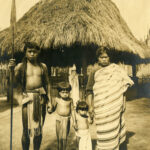 Igorots: The so-called savages of the Cordilleras
Igorots: The so-called savages of the Cordilleras 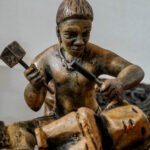 Od-odio, the Narra Tree Song
Od-odio, the Narra Tree Song 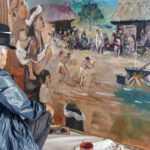 Baguio Creatives finding ways to rise above Pandemic
Baguio Creatives finding ways to rise above Pandemic 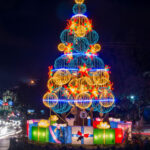 Baguio City Creative Christmas Trees
Baguio City Creative Christmas Trees 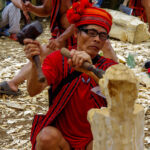 How a wooden spoon started a creative village
How a wooden spoon started a creative village  The Sagada Way
The Sagada Way  The Mountain Trail Thrill
The Mountain Trail Thrill  Baguio stages first Creative Festival
Baguio stages first Creative Festival 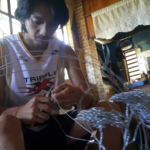 Wire Art, a miner’s lifeline
Wire Art, a miner’s lifeline